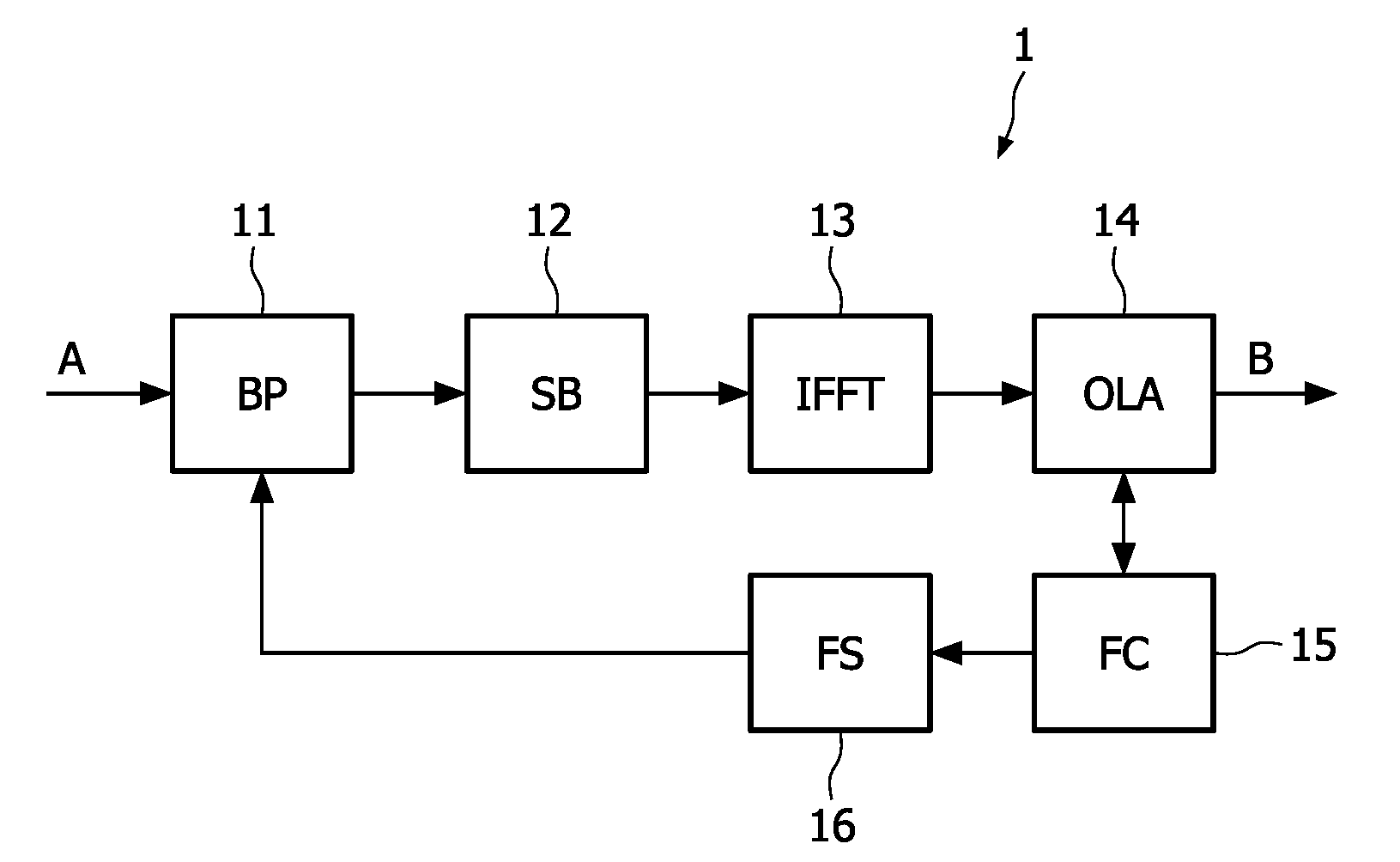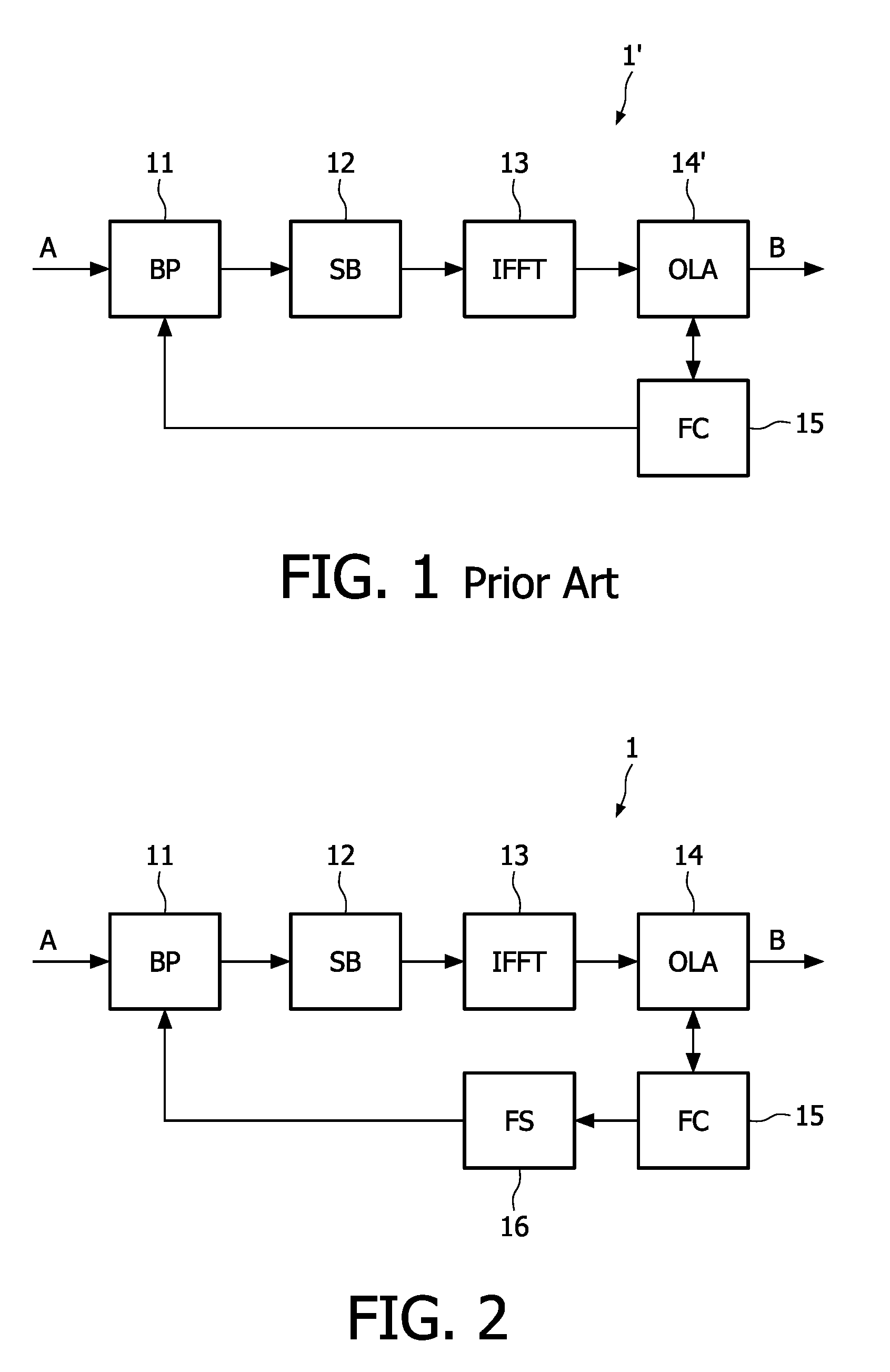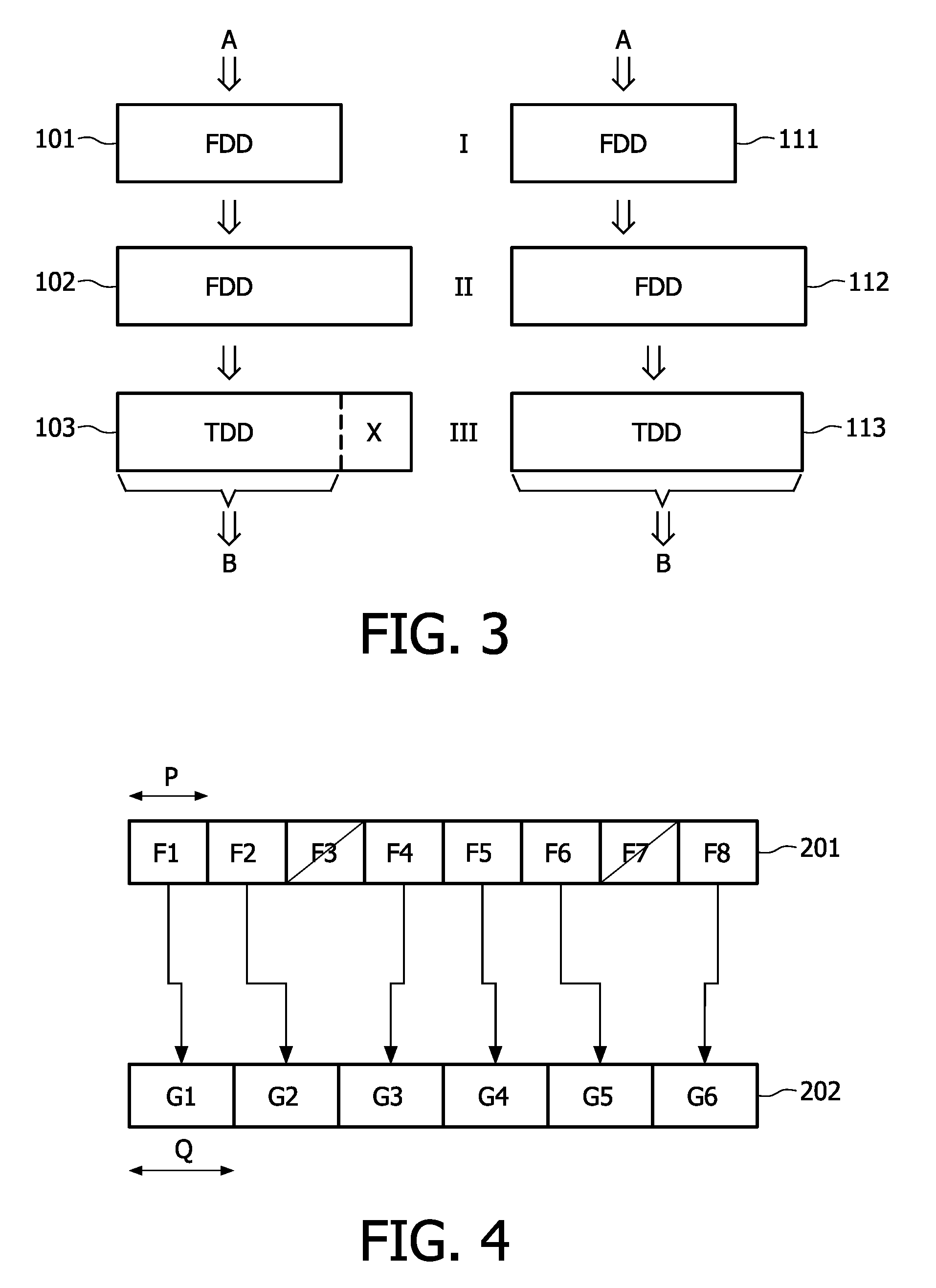Sound frame length adaptation
a technology of sound frame and length, applied in the field of length adaptation of sound frame, can solve the problems of only 75% transformation efficiency, inefficient transforming such frames, and inconvenient processing of alternative embodiments, etc., and achieve the effect of more efficien
- Summary
- Abstract
- Description
- Claims
- Application Information
AI Technical Summary
Benefits of technology
Problems solved by technology
Method used
Image
Examples
Embodiment Construction
[0049]The exemplary sound data conversion device 1′ according to the Prior Art which is shown in FIG. 1 comprises a bitstream parsing unit (BP) 11, a spectrum-building-unit 12, an inverse fast Fourier transform (IFFT) unit 13, an overlap-and-add (OLA) unit 14, and a frame counter (FC) 15.
[0050]The bitstream parsing unit 11 receives an input bitstream of sound parameters A and forms first frames containing these sound data. The sound parameters may comprise parameters describing and / or representing temporal or spectral envelopes, spectral coefficients, and / or other parameters. The number of sound parameters per first frame may depend on the particular type of encoding used, and may vary from a single data item to several hundred data items. First frames may have a variable length.
[0051]The sound data of a first frame provide a representation of sound during a specific time interval. The duration of this time interval may be chosen to satisfy psycho-acoustic and / or technical constrain...
PUM
 Login to View More
Login to View More Abstract
Description
Claims
Application Information
 Login to View More
Login to View More - R&D
- Intellectual Property
- Life Sciences
- Materials
- Tech Scout
- Unparalleled Data Quality
- Higher Quality Content
- 60% Fewer Hallucinations
Browse by: Latest US Patents, China's latest patents, Technical Efficacy Thesaurus, Application Domain, Technology Topic, Popular Technical Reports.
© 2025 PatSnap. All rights reserved.Legal|Privacy policy|Modern Slavery Act Transparency Statement|Sitemap|About US| Contact US: help@patsnap.com



